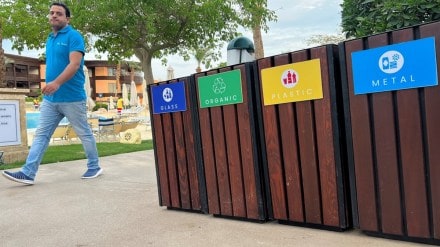– By Rohit Ambast, Ayusha Choudhury and Aryan Dhingra
In May last year, the Cellular Operators Association of India (COAI) wrote to the Ministry of Environment, Forest and Climate Change (MoEFCC), seeking a one-year deferral of EPR obligations for private telecom operators in India. The COAI’s representation was made after the EPR rules for e-waste were amended by the MoEFCC in November 2022 to include additional categories of electrical and electronic equipment. This issue is yet to be fully resolved and prompts consideration of the EPR framework in India and its potential impact on businesses.
Extended producer responsibility (or EPR) first gained prominence in the EU during the early 2000s and today is considered globally as an important tool to enhance sustainability and move towards a circular economy, with its core principle requiring private players to assume responsibility for the waste generated from their business activities, all the way through their product’s life cycle. Regulatory strategies for EPR are typically implemented through formal registration requirements, reporting obligations in relation to waste quantities and other data, recycling obligations, product design criteria and disclosures for consumers.
Rules for EPR in India have largely followed a similar structure to those in the EU. EPR was first introduced in India in 2011 for e-waste and plastics but with voluntary waste management requirements and mandatory target based EPR obligations were introduced only in 2016. In 2022, several changes were made, as registration requirements were added and additional waste categories such as batteries, waste tyres and used oil got included.
Under the current EPR rules, businesses that ‘place or introduce in the Indian market’ any of the five regulated categories of waste – namely, e-waste, plastic packaging, batteries, tyres and used oil – have to comply with certain EPR obligations. The act of placing or introducing a product in the market, however, may not always be easy to determine particularly for businesses that involve complex supply chains or service industries that rely on physical items to provide services. In addition, EPR obligations are not limited to only producers and manufacturers and, for certain waste categories, also cover importers and brand-owners.
A business covered by the EPR rules has to meet prescribed EPR targets every year and report its adherence to those targets to the Central Pollution Control Board (CPCB) through annual self-declarations. There are separate targets for re-use, recycling, use of recycled products, refurbishment and end-of-life disposal, and the targets are volume-based, determined as a prescribed percentage of either annual sales or annual quantities placed/ introduced in the market. Not all targets apply across all waste categories though; for example, plastic packaging producers have to meet reuse, recycling and use of recycled products targets but not end-of-life disposal targets. Meeting an EPR target involves assuming a financial obligation, which the business can discharge by either purchasing EPR certificates (e.g., in the case of e-waste) or collecting and depositing waste with registered recyclers to obtain EPR certificates (e.g., in the case of plastic packaging and waste batteries).
Setting EPR targets under the rules, however, is not straightforward, as shown by the representations made by the COAI to the MoEFCC. The COAI had argued that the industry was not consulted regarding the average life-cycle of telecom and broadcasting equipment and, in their view, the end-of-life disposal timeframe imposed under the EPR rules could increase compliance costs and capital expenditure and potentially cause network disruption. Matching regulatory EPR targets with real-world life cycles of products therefore becomes important as additional product categories are brought under EPR.
The ability of smaller businesses to absorb the compliance costs of EPR is another potential challenge and may require a policy-level solution. Earlier this year, a group of plastic packaging manufacturers reportedly appealed to the Prime Minister for an exemption for MSMEs. Cost-based arguments can also be made by smaller suppliers supplying to larger retailers or brand-owners. A threshold or de minimis approach may therefore be worth considering here; for example, Belgium applies a minimum threshold of 300kg of packaging material being placed in the market while the UK imposes EPR obligations only on producers having a minimum annual turnover of GBP 1 million and responsible for at least 25 tonnes of packaging material.
As EPR’s adoption increases, both globally and domestically, and new waste categories get added, businesses in India will have to develop or align their sustainability strategies accordingly. The initial financial impact is expected to be greater for businesses that rely on less sustainable packaging or product designs. A streamlined and efficient integration of India’s informal sector – which reportedly accounts for about 90% and 70% of e-waste collection and recycling in India – with the organized waste collection and recycling industry would play a crucial role. On the regulatory side, the EPR rules appear to be in line with global standards but may require some adjustments going forward to account for factors that are specific or unique to the Indian market and its industries.
(Rohit Ambast is Partner, and Ayusha Choudhury and Aryan Dhingra are Associates at INDUSLAW.)
(Disclaimer: Views expressed are personal and do not reflect the official position or policy of Financial Express Online. Reproducing this content without permission is prohibited.)
